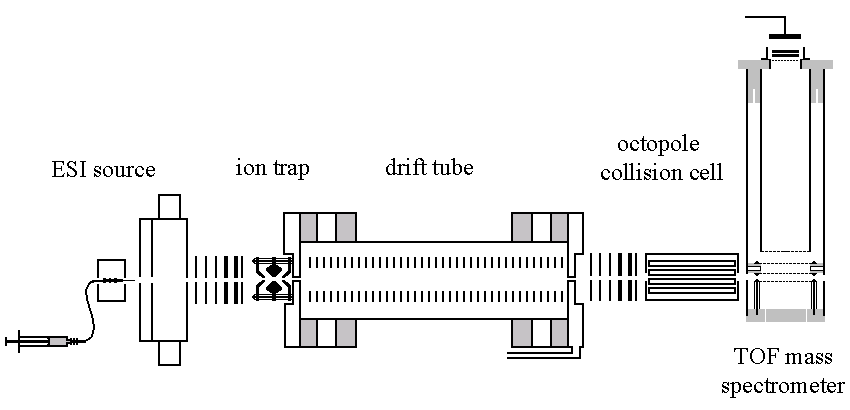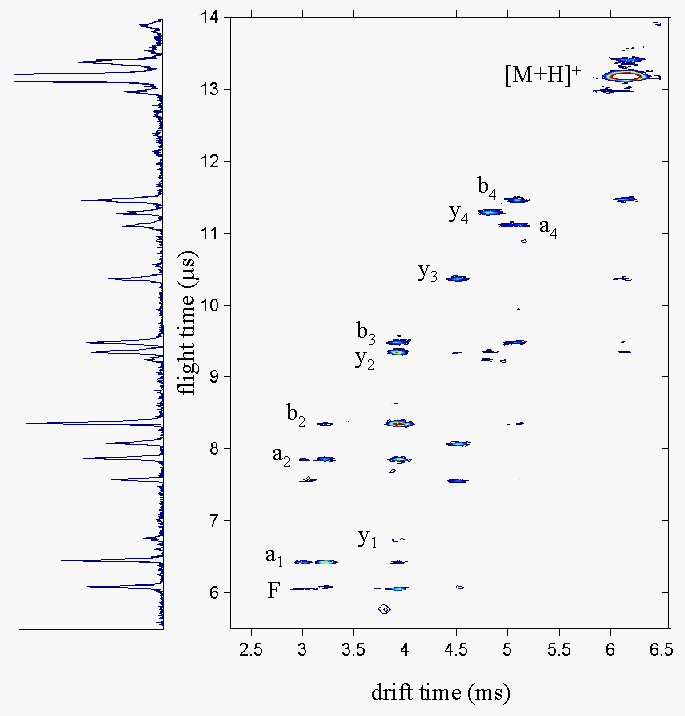Collision induced dissociation (CID) of molecular ions is an important approach for determining information about sequence. For a large mixture of ions, the initial step of mass selecting a parent ion introduces an intrinsic inefficiency to the CID process. For example, below we show an example where ten parent ions are analyzed by MS/MS in a triple quadrupole instrument. During the selection of an individual parent ion, the other nine parents are discarded — thus, the experimental efficiency is ~10%. For larger mixtures, this efficiency can be even less. For example, for complete analysis of a mixture of 500 parent ions (where each ion is selected individually) the efficiency is only about 0.2%. In the field of proteomics, where information about large numbers of proteins is required, such limitations can become significant.

Recently, we have developed an approach that allows CID of parent ions to be carried out in parallel. The approach uses a modified version of the nested ion mobility time of flight technology that we developed. The system is modified with a collision cell positioned between the drift tube and the time of flight instrument as shown in the diagram. The basic idea of this experiment is that ions are separated in the drift tube and undergo CID before TOF analysis. Because of the coincidence in drift times of a group of fragments with the antecedent parent, it is possible to interpret data from dissociation of many ions from a single experiment.

An example dataset recorded for D-Ala2,3 methionine enkephalin is shown below. In this case, some fragments (e.g., b3 and y3) are formed upon injection of the ions into the drift tube. Other fragment ions are mobility-labeled with the drift time of their precursor.

The picture below shows the instrument as constructed in the Group's original laboratory in the Chemistry Building. The instrument has since been disassembled and the various high-vacuum chambers have been utilized for newly-designed instrumentation. The modular design of these instruments, however, does allow us to quickly rebuild or re-purpose all of our drift tubes and high-vacuum chambers for a variety of instrumental configurations.
